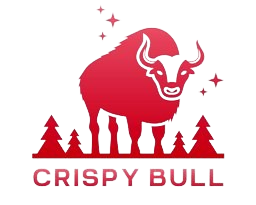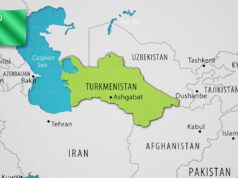In a bold push to redefine its blockchain strategy, Telegram has mandated that, effective February 21, 2025, all third-party crypto wallets and Mini Apps within its platform must exclusively integrate with The Open Network (TON) using TON Connect. This decision forces developers to migrate their projects to TON or face suspension, underscoring Telegram’s commitment to a unified blockchain ecosystem. While Telegram positions this as a step toward a more seamless and secure Web3 experience, critics argue that it threatens decentralization and interoperability.
Strategic Justification
Telegram’s partnership with the TON Foundation aims to enhance user experience by providing a more streamlined blockchain environment. By consolidating its blockchain infrastructure around TON, Telegram seeks to reduce fragmentation and mitigate potential security vulnerabilities that arise from supporting multiple networks. This exclusivity is intended to create a more cohesive ecosystem for developers and users. It aligns with Telegram’s long-term vision of integrating blockchain technology into its messaging platform.
Incentives for Developers
To facilitate the transition, the TON Foundation is offering grants of up to $50,000 to projects that migrate within the 30-day window. The amount varies based on factors such as audience size and previous support from Telegram. These financial incentives are designed to encourage developers to adapt swiftly and integrate their applications into the TON ecosystem.
Impact on Developers
For developers who have built applications on other blockchains, the mandate presents significant challenges. The migration process involves rewriting smart contracts, bridging assets to TON, and adopting the TON Connect protocol. Some developers have raised concerns over the tight transition timeline and the technical complexities involved.
The team behind Farm Frens, a popular Mini App, has already postponed its FREN token airdrop. The project cited the unexpected nature of Telegram’s announcement and the stringent requirements imposed. This highlights the difficulties projects may face in adapting to the new requirements within the given timeframe.
Market Implications and Industry Trends
Telegram’s decision to enforce exclusivity with TON has sparked broader discussions about decentralization and centralization within blockchain ecosystems. Critics argue that restricting its platform to a single blockchain contradicts the fundamental principles of openness and interoperability. Some fear that this move could set a precedent for other major platforms, increasing fragmentation in the crypto space.
Conversely, proponents believe focusing on a single blockchain can improve security, enhance user experiences, and streamline development processes. A unified platform could optimize resources and provide stronger developer support. This approach may also drive greater adoption and innovation within TON’s ecosystem, positioning it as a serious competitor among established blockchain networks.
>>> Unveiling the Power of Shiba Inu Blockchain in Public Governance
Telegram’s TON-exclusive strategy represents a major shift in its blockchain ambitions. It has far-reaching implications for developers, users, and the broader crypto industry. While the decision aims to create a more integrated and secure ecosystem, it also raises critical questions about decentralization, interoperability, and the evolving landscape of Web3 applications. As the February 21 deadline approaches, the industry watches closely how developers navigate this transition. Will this gamble pay off for Telegram and TON in the long run?
Readers’ frequently asked questions
What exactly is TON, and why is Telegram making it the exclusive blockchain for Mini Apps and crypto wallets?
TON, or The Open Network, is a decentralized blockchain developed by Telegram before the company withdrew from its official involvement due to regulatory challenges. The network is now managed by the TON Foundation, an independent community-driven entity. TON is designed for high-speed transactions, low fees, and scalability, making it attractive for applications requiring seamless blockchain integration.
Telegram’s decision to make TON the exclusive blockchain for Mini Apps and crypto wallets is driven by several strategic factors. First, it simplifies the user experience by eliminating compatibility issues with multiple blockchains. That ensures all Telegram-based apps and services operate within a single ecosystem. Second, it strengthens TON’s adoption by leveraging Telegram’s vast user base. Lastly, it aligns with Telegram’s broader vision of integrating Web3 into its messaging app. It will allowi users to interact with blockchain-based services without friction.
If I am a user, will this change affect how I send, receive, or store cryptocurrencies in Telegram?
Yes, this change could impact your crypto-related activities within Telegram, depending on what wallet or service you use. Currently, Telegram allows users to send and receive various cryptocurrencies through different wallets integrated into the app. With the new TON-exclusive policy, Telegram will no longer support wallets operating on Ethereum, BNB Chain, Solana, and other networks after February 2025. This means:
- If you are using a third-party wallet that does not support TON, you may need to migrate your assets to a TON-compatible wallet before the deadline.
- Telegram’s official wallet will remain fully functional, but it will only support TON and TON-based assets.
- Any crypto-based Mini Apps or services that do not transition to TON will likely stop functioning within Telegram.
If you primarily use Telegram for interacting with blockchain-based applications, it’s important to check whether your favorite services are migrating to TON or if you’ll need alternative platforms to continue using them.
Does this move by Telegram mean TON will become a dominant blockchain in the crypto space?
Not necessarily, but it does position TON for significant growth. By enforcing exclusivity, Telegram is essentially pushing millions of users and developers toward TON. This could drive higher adoption, liquidity, and development activity. That is a major boost for TON, as Telegram’s ecosystem provides built-in access to a vast audience, making it easier for projects to gain traction.
However, whether TON becomes a dominant blockchain depends on several factors. Competition from Ethereum, Solana, and other major blockchain networks remains strong. Some developers may surely resist the shift, preferring open ecosystems over centralized control. Additionally, while Telegram has enormous influence, not all crypto projects rely on it for user engagement.
Ultimately, TON’s success will depend on how well it can attract developers, maintain decentralization, and offer practical advantages over other blockchains. If it delivers on speed, security, and scalability, it has the potential to carve out a significant role in the Web3 space. However, dominance is far from guaranteed.
What Is In It For You? Action Items You Might Want to Consider
Reassess Your Telegram-Based Crypto Holdings and Services
If you use Telegram for crypto transactions, wallets, or Mini Apps, now is the time to review your holdings. See if they are affected by the TON exclusivity move. Check whether your favorite wallets and dApps will transition to TON or if they will become unsupported after February 2025. If you’re holding assets on non-TON networks within Telegram-based apps, consider transferring them to an external wallet or an exchange before any service disruptions occur.
Keep an Eye on TON’s Price Action and Market Adoption
With Telegram pushing TON as its exclusive blockchain, demand for TON-based assets could surge, bringing potential trading opportunities. Watch on-chain activity, liquidity inflows, and developer adoption to gauge whether TON’s market position strengthens or if user resistance slows its growth. If a rally builds up due to increased adoption, strategic entry points could present themselves. But also be cautious of speculative hype that could lead to short-term volatility.
Monitor Telegram’s Next Moves for Broader Crypto Integrations
Telegram’s blockchain strategy is evolving, and this TON mandate may be just the beginning. If the platform expands its crypto offerings – such as DeFi integrations, staking mechanisms, or NFT marketplaces on TON – it could create new trading opportunities and use cases for TON-based assets. Stay updated on Telegram’s future blockchain developments and be ready to adjust your portfolio based on how the ecosystem grows.










